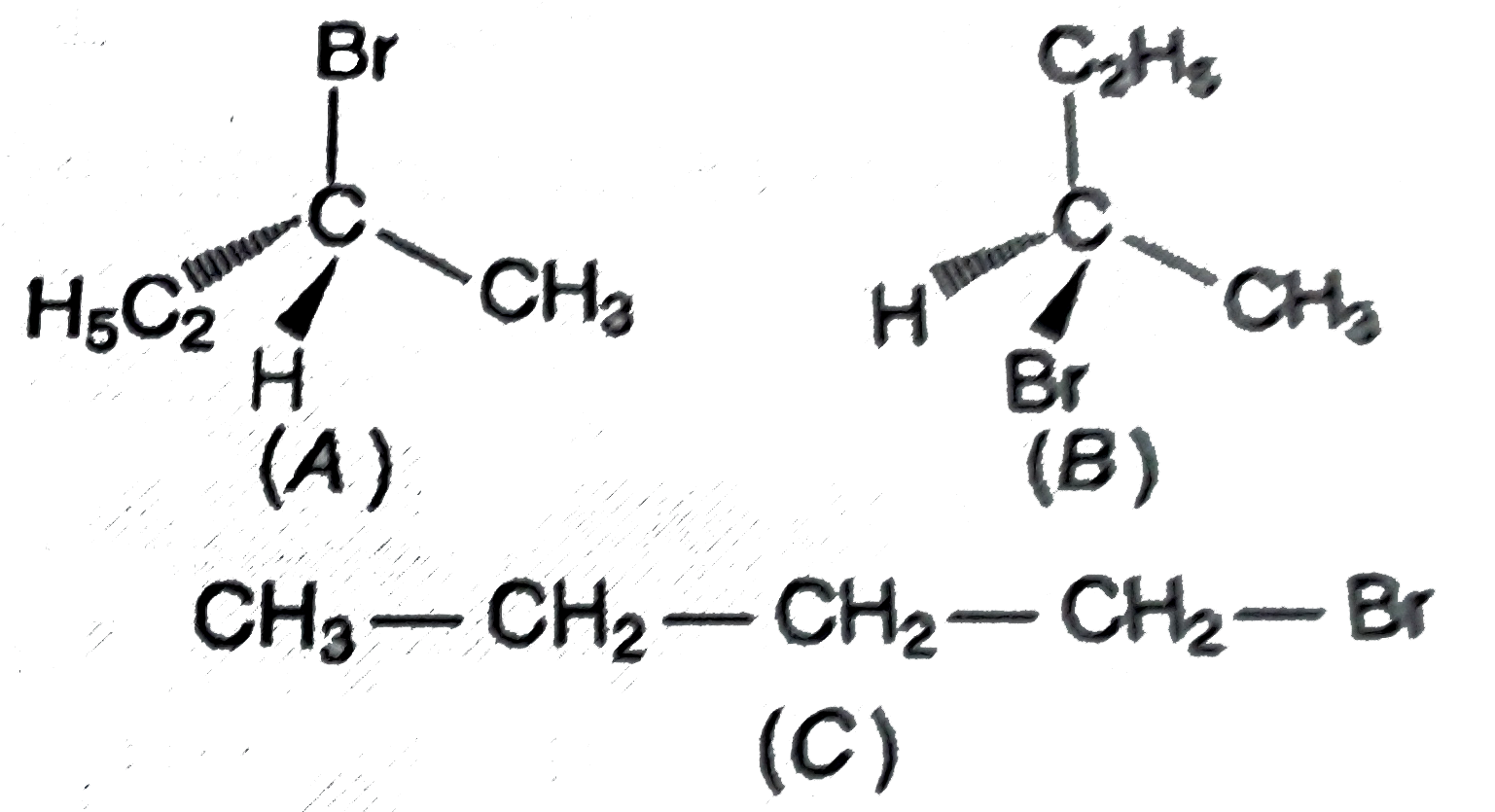Addition of to cis-2-butene would give a product which is:
achiral
racemic
meso
optically active
The correct Answer is:B
To solve the question regarding the addition of Br2 to cis-2-butene, we can follow these steps:
Step 1: Understand the Structure of cis-2-butene
Cis-2-butene has the following structure:
CH3|CH3−C=C−H|H
In this structure, the two methyl groups (CH3) are on the same side of the double bond.
Hint: Identify the arrangement of substituents around the double bond to understand the stereochemistry.
Step 2: Reaction with Bromine
When cis-2-butene reacts with bromine (\( Br_2 \)), the addition occurs via an anti-addition mechanism. This means that the bromine atoms will add to opposite sides of the double bond.
Hint: Remember that bromine adds across the double bond in an anti manner, which is crucial for determining the stereochemistry of the product.
Step 3: Formation of the Product
The anti-addition of bromine to cis-2-butene will lead to the formation of a dibromide product. The resulting structure will have one bromine atom added to one carbon of the double bond and the other bromine atom added to the adjacent carbon, but on the opposite side.
The product can be represented as:
CH3|CH3−C−Br|Br
This product has a plane of symmetry, making it a meso compound.
Hint: Look for symmetry in the product structure to determine if it is meso or not.
Step 4: Identify the Type of Product
Since the product formed is a meso compound, it is not optically active because it has an internal plane of symmetry. Therefore, it does not rotate plane-polarized light.
Hint: Recall that meso compounds are typically optically inactive due to their symmetry.
Conclusion
The addition of \( Br_2 \) to cis-2-butene results in a meso compound, which is the correct answer to the question.
Final Answer: The product is a meso compound.
---
Cis-2-butene has the following structure:
CH3|CH3−C=C−H|H
In this structure, the two methyl groups (CH3) are on the same side of the double bond.
When cis-2-butene reacts with bromine (\( Br_2 \)), the addition occurs via an anti-addition mechanism. This means that the bromine atoms will add to opposite sides of the double bond.
The anti-addition of bromine to cis-2-butene will lead to the formation of a dibromide product. The resulting structure will have one bromine atom added to one carbon of the double bond and the other bromine atom added to the adjacent carbon, but on the opposite side.
CH3|CH3−C−Br|Br
This product has a plane of symmetry, making it a meso compound.
Since the product formed is a meso compound, it is not optically active because it has an internal plane of symmetry. Therefore, it does not rotate plane-polarized light.
The addition of \( Br_2 \) to cis-2-butene results in a meso compound, which is the correct answer to the question.
Similar Questions
Knowledge Check
Addition of Br2 to trans-2-butene would give a product which is
AachiralBracemicCmesoDoptically activeAddition of OsO4 to cyclopentene would give a product which is:
AachiralBracemicCmesoDoptically activeAddition of BH3 followed by H2O2 to trans-2-butene would give a product which is:
AachiralBracemicCmesoDoptically active
A) Addition of HBr on 2-butene gives two isomeric products.
R) Addition of HBr on 2-butene follows Markownikoff's rule.
View Solutionstatement I: Addition of Br2 to 1-butene gives two optical isomers.
statement II: The product contains one asymmetric carbon atoms.
View SolutionThe addition of HBr of 1-butene gives a mixture of products A,B and C

(C) CH3−CH2−CH2−CH2−Br
The mixture consists of
View SolutionDehydration of 1-butanol gives 2-butane as a major product, by which of the following intermediate the compound 2-butene obtained.
View SolutionAddition of bromine to cis-3 hexene gives
View Solution

